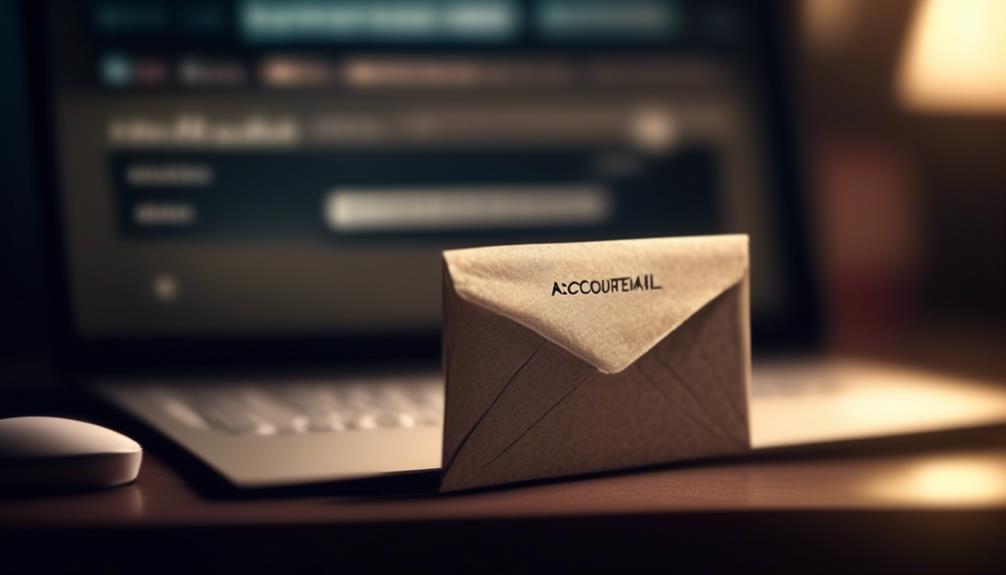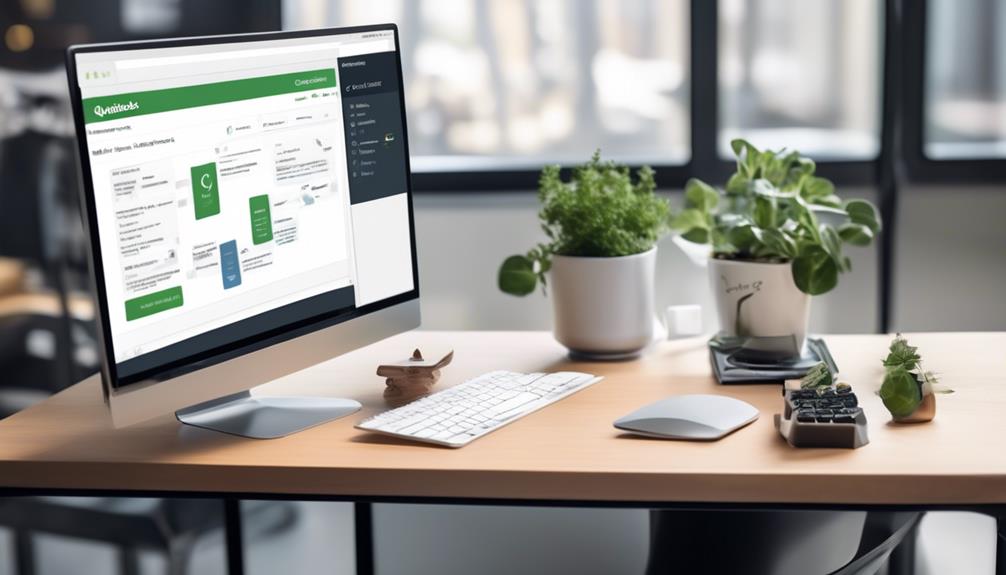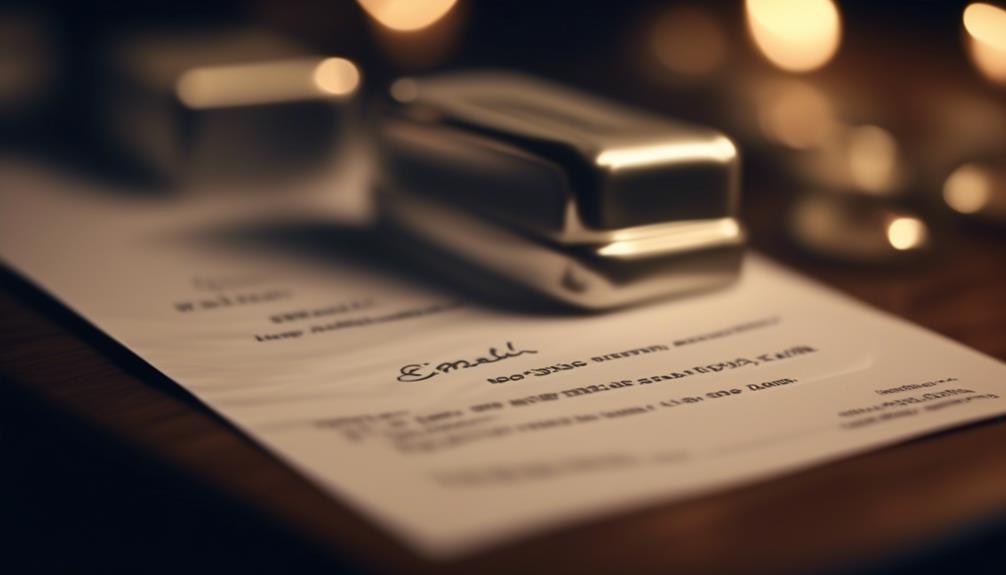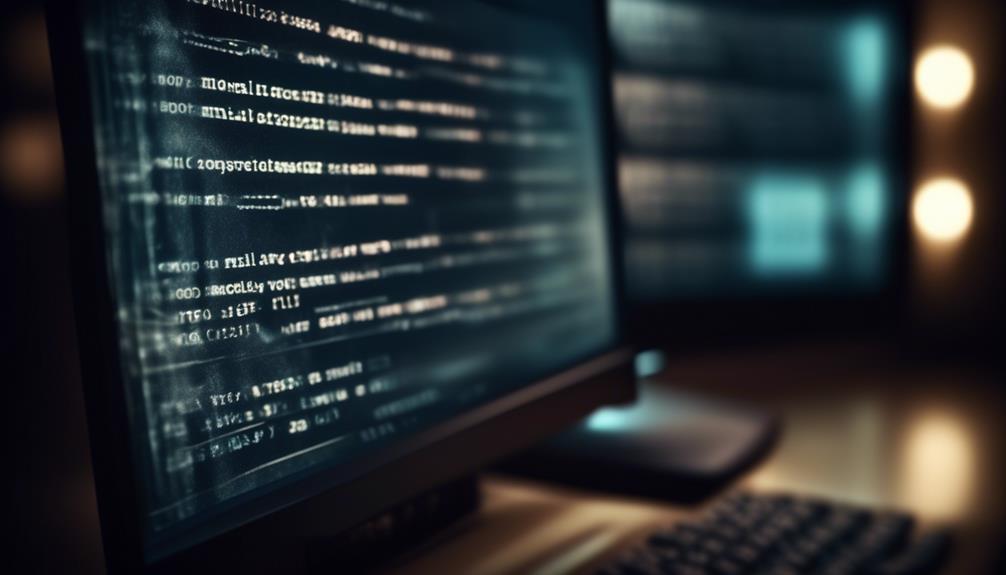Everyone is familiar with the annoyance of getting a verification email that seems like it’s stuck in the early 2000s. This isn’t merely a matter of looks; the design and substance of a verification email are key in boosting user involvement and verifying the legitimacy of your email roster.
So, how can we craft a verification email that not only serves its purpose but also leaves a positive impression on the recipient? Let’s explore some key elements and best practices for creating a compelling verification email that prompts action and builds trust.
Key Takeaways
- Verification emails are important for confirming actions, ensuring security, and building trust with users.
- Subject lines should be personalized, clear, and engaging to increase open rates.
- Well-designed templates with clear instructions enhance user experience during the verification process.
- Timing of sending verification emails is crucial and should be done promptly after sign up or subscription.
Importance of Verification Email
Verification emails play a crucial role in confirming actions or transactions and instilling a sense of security and trust for users. When we send verification emails during the registration process, it not only verifies the user’s email address but also serves as a critical step in keeping their account safe. By using well-designed verification email templates, we can ensure that users receive clear and concise instructions, enhancing their overall experience.
Additionally, the use of personalized verification codes and timely subject lines can significantly increase open rates, leading to a smoother verification process.
We understand that different types of verification emails, such as account activation, password reset, and order confirmation, offer variety and customization to streamline the verification process. This not only provides flexibility but also reinforces the brand image, ultimately contributing to user trust and engagement.
It’s imperative to maintain strong security measures through email verification, as it directly impacts user trust, engagement, and overall business success. Therefore, the importance of verification emails can’t be overstated in today’s digital landscape.
Subject Line Examples

After understanding the significance of verification emails in maintaining user trust and security, let’s now explore impactful subject line examples that can enhance the open rates and engagement for these crucial communications.
- ‘Complete Your Registration: Verify Your Email Now’
- ‘Hey [Customer Name], Just One More Step to Get Started!’
- ‘Stay Secure: Confirm Your Account with [Company Name]’
Crafting a compelling subject line for verification emails is essential to prompt recipients to open and engage with the email. Personalizing the subject line with the recipient’s name or referencing their previous interactions with the platform can significantly boost open rates. Additionally, including the company’s name in the subject line can help differentiate the email from other communications in the recipient’s inbox. Experimenting with emojis or slang, if suitable for the brand’s tone and the target audience, can also make the subject line more engaging and increase the likelihood of the recipient clicking on the verification email.
Template Ideas for Verification Email
Upon confirming a user’s actions or transactions, verification emails play a crucial role in ensuring security and fostering trust with our users. When crafting template ideas for verification emails, it’s essential to consider the various scenarios and user experiences that may require verification. Here are some template ideas for verification emails that can provide an extra layer of security and enhance the registration process:
| Scenario | Template Idea |
|---|---|
| Email Verification | “Verify your email address to complete registration.” |
| Account Activation | “Activate your account to access all features.” |
| Password Reset | “Confirm password reset request for added security.” |
These template ideas aim to prompt users to take action and confirm their intentions, whether it’s verifying their email address, activating their account, or resetting their password. By using clear and concise language, these templates can guide users through the verification process and ensure that the necessary steps are taken to confirm their actions. Incorporating such template ideas into our verification email content can streamline the user experience and instill confidence in our users.
Timing of Sending Verification Email

When users engage with our platform, ensuring the prompt delivery of verification emails becomes essential for confirming their actions and maintaining a secure and reliable user database.
The timing of sending verification emails is crucial for user verification. It needs to be done promptly after a user signs up or subscribes to our service to confirm their email address. Additionally, verification emails should be sent at the beginning of the user journey to maintain a clean and valid subscription list. Regularly sending verification emails also helps to keep the subscription list up-to-date and free from invalid email addresses. Furthermore, verification emails can be sent when users update their email addresses to ensure the new address is valid.
Sending verification emails at the right time is critical for ensuring that new users can access our platform without any hindrance. It also plays a significant role in maintaining the security and integrity of our user database. Moreover, prompt verification email delivery can enhance customer support by enabling quick issue resolution for users who need to verify their email addresses.
Please confirm the importance of timely verification email delivery in welcoming and onboarding new users to our platform.
Elements of an Effective Verification Email
Crafting an effective verification email involves incorporating essential elements that enhance user engagement and trust.
The key components of an effective verification email include a clear and compelling subject line, personalized content, and concise instructions.
The subject line should convey the purpose of the email and entice users to open it. Personalization, such as addressing the recipient by name, can create a sense of connection and authenticity.
Additionally, the email should provide clear instructions on the action required, whether it’s confirming an account, verifying a credit card, or accessing an account. Including a prominent call-to-action button or link enables users to confirm or complete the necessary steps easily.
Furthermore, emphasizing the security measures in place and providing contact information for the support team can instill confidence in users.
An effective verification email template should align with the overall brand voice and image, ensuring consistency in email marketing communications.
Frequently Asked Questions
How Do You Write a Verification Email?
We write a verification email by crafting a clear and compelling message that prompts users to confirm their actions or transactions.
Engaging subject lines with the company’s name can increase open rates.
Different templates cater to various scenarios, such as welcome emails, account activation emails, and password reset emails.
Timing is crucial to ensure prompt delivery during user sign-ups or updates.
Verification emails provide security, trust, and enhance brand image, fostering user engagement.
How Do I Email a Verification Code?
We email a verification code by composing a message that includes a clear subject line and concise instructions.
We ensure the code is prominently displayed and provide a brief explanation of its purpose.
We then send the email at the appropriate time in the user journey, such as after account creation or a password reset request.
This ensures the recipient can easily locate and use the verification code.
What Is the Email Verification Approach?
We ensure email authenticity through the email verification approach. This method confirms user-provided email addresses, upholding security standards and trust in digital services.
Different emails, like account activation and password reset, serve distinct purposes. Timing of sending verification emails aligns with the user journey.
We design these emails in plain text or HTML to suit various preferences and needs.
How to Verify Someone’s Email?
We verify someone’s email by sending a confirmation link or code to their email address. Once they click the link or enter the code, their email is successfully verified.
This process ensures that the email address belongs to the user and helps prevent unauthorized access. It’s a vital step in confirming user identity and maintaining security.
Conclusion
Just as a key unlocks a door, verification emails unlock the potential for clean and engaged email lists. They serve as a symbol of trust and credibility, ensuring that only genuine recipients receive your messages.
By incorporating best practices and staying ahead of future trends, verification emails pave the way for successful email marketing campaigns.
Embrace the power of verification emails to open the door to stronger connections and deeper engagement with your audience.









